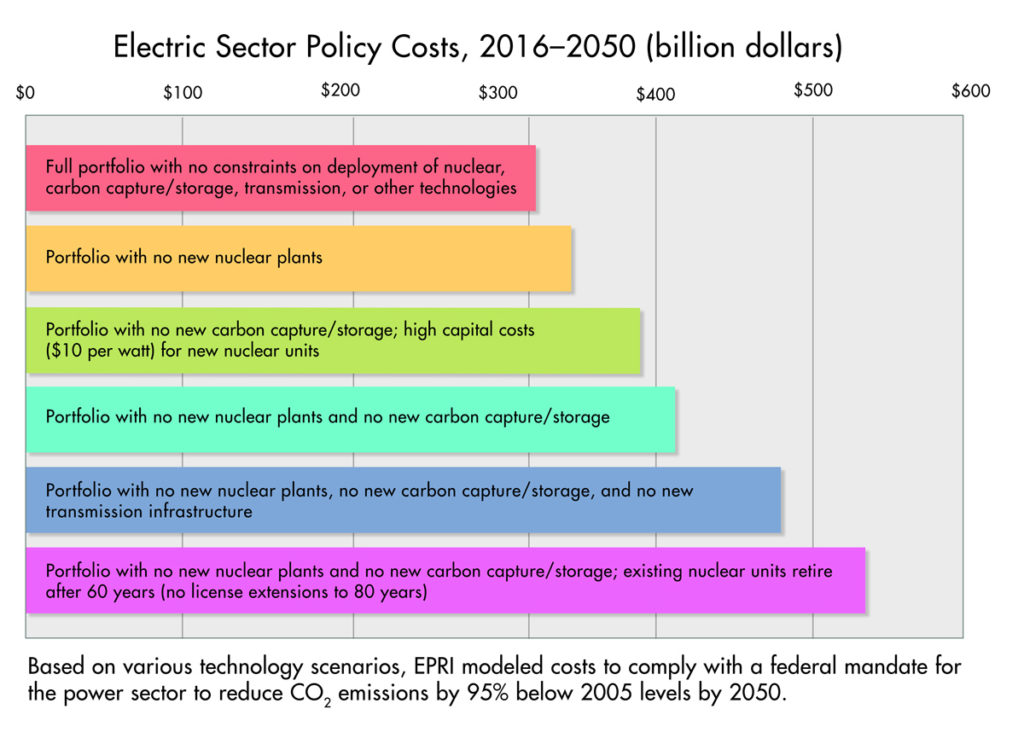How to Cut Compliance Costs: Innovate

Modeling Study: U.S. Could Save Hundreds of Billions of Dollars with a Full Generation Portfolio
Given a potential stringent carbon policy, the U.S. power sector could reduce compliance costs by about half by deploying broad technological portfolios, according to an EPRI modeling study.
Using EPRI’s United States Regional Economy, Greenhouse Gas, and Energy (US-REGEN) model, researchers evaluated a range of portfolios and advanced technology R&D with respect to generation mix, emissions, and power industry costs, for 2016–2050. The analysis considered a hypothetical federal mandate for the power sector to reduce CO2 emissions by 2050 to 95% below 2005 levels. The study defined “full” technology portfolio to include solar, wind, hydropower, geothermal, natural gas, coal, carbon capture and storage for fossil units, new nuclear plants, extended operations for existing nuclear plants, and biomass.
Compliance costs decreased dramatically as portfolios included more options, with dispatchable low-carbon generation such as nuclear and carbon-capture-equipped fossil units providing significant value. Costs for a full portfolio were more than $200 billion less than a portfolio lacking new and existing nuclear plants and carbon capture and storage (see chart below). R&D on advanced generation technologies drove down compliance costs by another $200 billion, assuming that certain capital cost targets are met.
Key EPRI Technical Experts:
John Bistline
For more information, contact techexpert@eprijournal.com.


